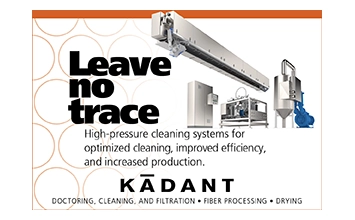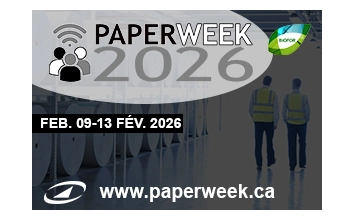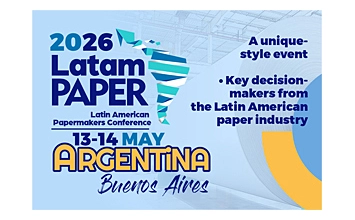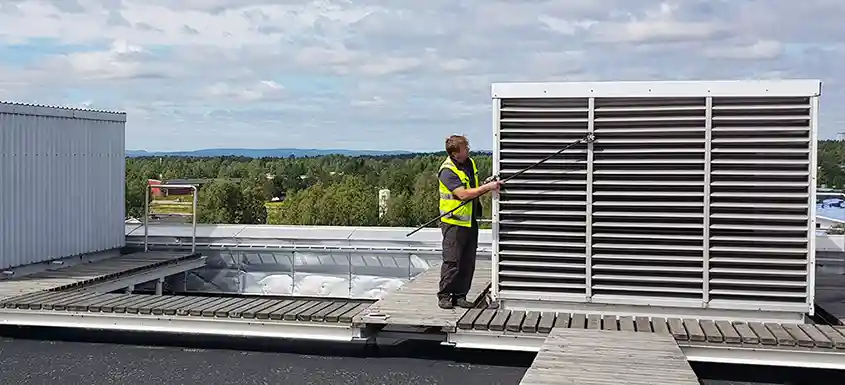Interview with Jean-Philippe Jacques, Director of Innofibre – Cellulosic Products Innovation Centre
As the forestry sector undergoes profound transformation, Innofibre stands out as a leading force driving innovation and supporting businesses. “We aim to be a research institution that supports this transition,” says Jean-Philippe Jacques, the centre’s director.
In response to challenges stemming from global geopolitical shifts, Innofibre is deploying solutions to diversify wood markets and develop products that decarbonize the industry while enhancing productivity. This strategy represents a major opportunity to secure the sector’s future.
Beyond its support for businesses, the institute aligns its research projects with environmental requirements and encourages close collaboration with other industry stakeholders. It seeks to play a central role in the evolution of the forestry market, emphasizing sustainability and competitiveness.
At the Heart of Decarbonization and Innovation
Innofibre positions itself as a catalyst for the forestry sector’s transition in the face of environmental and economic challenges. Its research focuses on supporting pulp and paper industry in innovation. Some examples of project: reducing supply and operating costs, exploring alternative fibres, developing recyclable cellulosic packaging, and accelerating the decarbonization of industrial facilities.
One of the centre’s top priorities is to diversify the use of paper and cardboard to replace fossil-based products. It is also exploring the potential of renewable carbon derived from forest resources, paving the way for new industrial applications, including in the steel industry.
To bring these innovations to life, Innofibre relies on unique pilot platforms, including specialized facilities for paper packaging and the recovery of residual bioresources. These advanced infrastructures enable testing, optimization, and validation of solutions before scaling to industrial production.
In its laboratories, state-of-the-art equipment supports the transformation of residual bioresources through processes such as separation, cleaning, grinding, and drying. The aim is to efficiently treat materials containing physical contaminants and maximize their value. This approach meets the growing demand from companies for innovative and sustainable raw material management solutions.
 A chemical technician performs analyses using the optical tensiometer.
A chemical technician performs analyses using the optical tensiometer.
Fostering Local Innovation and Strategic Partnerships
To amplify its impact, Innofibre focuses on market-relevant solutions and strategic industrial partnerships. Jean-Philippe Jacques emphasizes the need for a structured approach to identify local production opportunities and foster technological development.
In the current climate of strong competition from U.S. imports, the centre plans to analyze imported products to identify those that could be manufactured locally. The dual goal is to assess their technological maturity and build a robust value chain with industry partners and other research institutions with complementary expertise.
While cellulosic packaging offers great potential, several challenges still hinder its adoption. Though the technologies are available, supply often falls short of demand due to imbalances in required volumes. Large manufacturers need high volumes, while smaller firms have more modest requirements. This disparity makes it difficult to establish a viable supply chain.
Innofibre could play a facilitating role by gradually structuring the market and, for example, developing small-series prototypes to support emerging businesses until a private player is ready to invest in large-scale production.
 Coating preparation kitchen
Coating preparation kitchen
Toward a Sustainable Business Model
Jean-Philippe Jacques believes that positioning Innofibre as a springboard for the development of cellulosic packaging is achievable, provided the necessary infrastructure, skilled personnel, and financial resources are available.
The success of this strategy would depend on the ability to unite industry players around a viable business model. Leveraging agility and collaboration, the institute aims to combine its internal expertise with strategic partnerships to meet companies’ technological needs.
Innofibre also observes shifts in industrial strategies, often influenced by external factors such as tariffs. This context provides an opportunity to strengthen local partnerships before considering international expansion.
In a sector undergoing rapid transformation, Innofibre is working to improve processes, develop new products, diversify cellulosic products and accelerate the shift toward cellulose-based solutions. Knowledge transfer and workforce training are also top priorities, helping businesses stay competitive.
“Our goal isn’t to generate millions in revenue, but to measure how many companies we’ve supported and how we’ve helped them meet their challenges,” concludes Jean-Philippe Jacques. This philosophy underscores Innofibre’s commitment to contributing actively to the sector’s sustainable development.

About Innofibre
Innofibre provides the industry with a unique combination of expertise and specialized technological infrastructure to foster innovation and transformation in the forestry sector. Its key areas of expertise and infrastructure include:
1. Key Areas of Expertise
- Decarbonization and Energy Transition: Developing solutions to reduce the carbon footprint of mills, including residue valorization, bioenergy, and renewable carbon development.
- Alternative and Bio-Based Fibres: Conducting R&D on alternative fibres to diversify sourcing and reduce dependency on conventional, costlier raw materials.
- Cellulosic Packaging and Sustainable Materials: Developing innovative, recyclable, and compostable packaging solutions with advanced features such as bio-based barrier coatings and 3D packaging.
- Valorization of Residual Bioresources: Utilizing advanced techniques—separation, cleaning, grinding, and drying—to maximize reuse and minimize waste.
- Optimization of Papermaking Processes: Enhancing manufacturing process efficiency for greater competitiveness and lower costs.
- Collaboration and Technology Transfer: Partnering with businesses, universities, CCTTs, and research centres to accelerate innovation adoption and build local value chains.
- Pulping Process Optimization and New Paper Grade Development: Leveraging deep expertise to enhance pulping efficiency and support the development of innovative, high-performance paper grades tailored to evolving market demands.
2. Specialized Technological Infrastructure
- Unique Pilot Platforms: Facilities that allow testing and optimization of solutions before full-scale industrial deployment, particularly in packaging and bioresource recovery.
- Dedicated Paper Packaging Equipment: Research infrastructure focused on developing and optimizing cellulosic packaging to meet market needs.
- Bioresource Conditioning and Recovery Facilities: Advanced technologies for sample processing, contaminant separation, and recovery of residual wood fibres.
Through its expertise and infrastructure, Innofibre plays a pivotal role in driving innovation and sustainable transformation in the pulp and paper and forestry industries.


























































